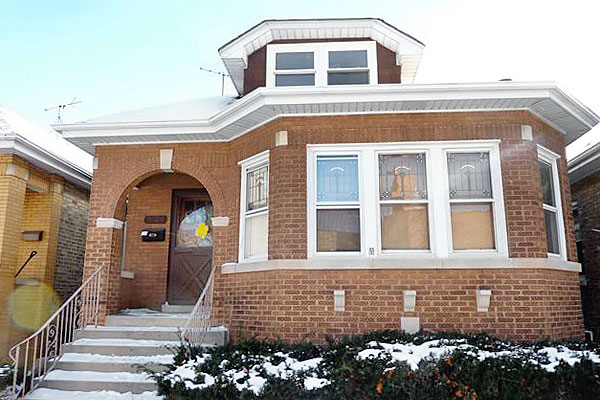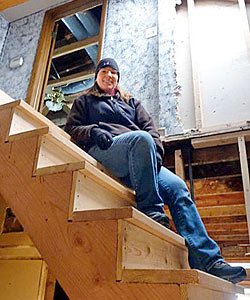With foreclosures still proliferating in and around Chicago, sharp buyers can spot some great bargains. If the property is damaged, though, most mortgage lenders won’t finance the purchase. That’s why some buyers are now turning to a specialized loan called a 203K, based on the future value of the house, post-repairs…

With foreclosures still proliferating in and around Chicago, sharp buyers can spot some great bargains. If the property is damaged, though, most mortgage lenders won’t finance the purchase. That’s why some buyers are now turning to a specialized loan called a 203K, based on the future value of the house, post-repairs.
It worked for newlyweds Christian and Nicole Hawkenson, who both work for the Cook County Sheriff’s Department. Eager to buy their first house, the couple spotted one that was ideally located for them and nicely priced—a classic octagon-front Chicago bungalow right across the alley from the Gladstone Park house where Nicole grew up and her sister now lives. And the bank that had foreclosed on the previous owner’s $391,500 mortgage from 2007 was asking just $199,000 for it.
But the interior was in serious disrepair. Among other problems, “the basement was full of mold,” Nicole recalls. “The house had been empty for a few years, and when a radiator cracked, the basement filled up with water, to about five feet [deep].” The roof leaked, too, damaging the drywall as well as the hardwood flooring and subfloors.

Nicole Hawkenson sits on the temporary stairs in the bungalow she and her husband are rehabbing.
Working with Eric Wade, a Chicago-area 203K consultant, the couple determined that they needed about $100,000 more than the purchase price to do a complete gut rehab of the interior, including mold remediation, an up-to-code staircase, and new heating, air conditioning, and plumbing. Subtracting their down payment, the Hawkensons needed a $277,000 mortgage.
In the past, 203K loans were familiar mostly to housing authorities and not-for-profits, but with so many derelict foreclosures available, individual homebuyers have begun to discover them. A 203K requires a detailed pre-appraisal of the property’s future—that’s where the consultant comes in—to plan renovations that are likely to increase the value of the house. The lender retains all control of the money for the rehab, issuing checks to the contractors and vendors.
At the Hawkensons’ bungalow, Green Day Construction has demolished virtually everything inside except for some nice vintage details—a textured brick fireplace flanked by built-in bookcases and lovely art glass windows. Removing everything down to the studs allows for green features like a high-efficiency furnace and energy-efficient spray foam insulation, Green Day’s Scott Allbright explains.
The job is scheduled for completion in March or April. The renovation takes the bungalow from four bedrooms to three—a first-floor bedroom was incorporated into the enlarged kitchen. And a standard-width staircase replaces a disturbingly narrow one. “You had to go up sideways,” Allbright says.
Skeptics might worry that both borrowers and lenders are taking a big risk on a loan staked on future value at a time when prices have been falling and may fall more. But Allbright, who has handled several other 203K-financed projects, says the process is strict enough that “you can’t go overboard with the [rehab] work.”
At the total of $300,000 they’re spending on the house and the rehab, the Hawkensons come in at just 87 percent of the October sale price on a fully updated bungalow a few blocks away—a home with considerably less curb appeal than theirs.
Why not buy an already rehabbed home? “We wanted to do this one our way,” Nicole Hawkenson tells me, “and this is the neighborhood where my family is. I wanted to help make the block better.”
My photos below show the house in its current state. When the job is done sometime this spring, I’ll come back for a full before-and-after photo tour.


